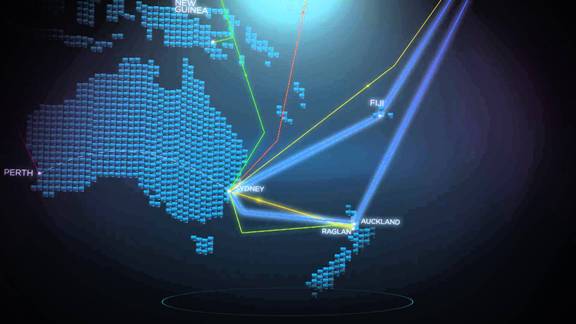Published on the 13/06/2013 | Written by Newsdesk

Telstra, Telecom and Vodafone have gone to tender for a builder and are considering landing sites for their new telco cable…
The consortium of telecommunications companies that in February announced it intended to that to co-invest in a new submarine telecommunications access cable between Australia and New Zealand has today issued a tender for the cable’s construction.
A press release revealed that several international submarine cable contractors have been invited to tender for the Tasman Global Access (TGA) Cable and all have indicated strong interest in responding.
The consortium has indicated that it anticipates the preferred option will be chosen over the next couple of months, with a contract expected to be in place by later this year and cable construction starting in 2014.
The 2300km undersea cable system is expected to enter service early in 2015, deploying the latest 100G technology.
When Telecom, Vodafone and Telstra announced they had signed a non-binding memorandum of understanding (MoU) to co-invest in the TGA Cable back in February, telecommunications commentator and TUANZ CEO, Paul Brislen said, “it means very little at this point – it’s only a memo of understanding and we’ve got a long way to go before any cable is actually laid”.
Now we are one step closer to that reality, with two landing options on the North Island’s west coast currently being evaluated for the New Zealand end of the cable; one south of Auckland and the other to the north. In Australia, a number of sites in northern and southern Sydney are currently being considered.
The TGA Cable will significantly improve New Zealand’s international telecommunications connectivity as well as strengthen links into fast-growing Asian markets through the three additional international cable systems currently serving Australia from the Asia Pacific Region (with several more proposed or in development). It reflects the growing importance of trans-Tasman internet traffic and demand from corporate customers for route diversity: around 40 percent of both Telecom and Vodafone’s international internet traffic is now Australia to New Zealand, versus just 10 percent in 2000. Australia also enjoys good connectivity with Asia, which is achieving strong internet traffic growth in line with global economic shifts.
When the plans were initially announced Brislen said there were good and bad aspects to them (you can read more of what he said here), but perhaps most pertinent at this stage is the potential for a conflict of interest, given that Telecom currently owns 51 percent of the Southern Cross Cable and the Telecom-Vodafone combination could lead to a telco duopoly in New Zealand once more. Back in February the Commerce Commission indicated that it would be keeping a sharp eye on what is going on and no doubt it has pricked up its ears regarding the latest developments.



























